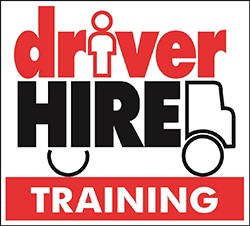Trucks are the most commonly used means of transporting freight. By the end of 2019, cargo moved in the UK by HGVs increased by 1% in comparison to 2018, to 154 billion tonne kilometres. When trucks transport cargo, they require trailers to carry the load. In haulage, it’s important to use a trailer that’s suitable for the required job. However, as there are many different types of trailers, with each having a different load capacity and purpose, it can be difficult to determine which is best suited.
In this article, we will discuss everything there is to know regarding trailers, with details on weights and considerations for each type.
What is a Trailer?
A trailer is an extra carrier that attaches to a truck whilst driving on the highway. It doesn’t have an engine; however, it does have wheels. This means that it must be attached to a HGV that has an engine, in order for it to be functional.
The Different Types of Trailers
In order to choose the best suited trailer for a job, first you must determine the type of load to be carried. For instance, if you’re transporting cargo that requires being protected from the sun – a closed trailer is suitable. Equally, if you’re planning on transporting load that’s already confined in a container – a flatbed trailer would be ideal.
As demonstrated, each type of trailer has a different use. So that you can choose the right trailer for your freight, we will outline the different types below:
Box trailers are one of the most common trailers you’ll find in the road transport industry. They’re often utilised for transporting expensive freight. This is because they offer exceptional security due to their rigid walls, whilst back-door loading makes it simpler to load and unload freight. Box van trailers can vary massively and therefore their dimensions and capacity can differ depending on the model.
Tilt trailers are specifically designed to make it easier to secure and tie freight down. This is especially important for transporting hazardous loads. Tilt trailers can carry cargo that’s up to 32.3 tonnes. In terms of size, this type of trailer can be up to 13.6m in length and have a width of up to 2.5m.
Curtain trailers, also known as curtain siders, are designed to offer easy access to your freight. They’re used in a wide range of industries for various types of cargo. They have a similar design to box van trailers. However, instead of back-door loading, freight can be moved on/off via the sides, which resemble movable curtains. These trailers can also be transported via trains as well as HGVs. Whilst dimensions and capacity may vary depending on manufacture and production year, typical measurements follow – L13.6m x W2.5m. This type of trailer typically has a load capacity of 32.8 tonnes.
Mega trailers, sometimes referred to as jumbo trailers, have the same movable curtains as a curtain trailer. However, they also have an additional movable top cover. The leading feature of a mega trailer is its increased height (almost 3m) which means it’s capable of shipping taller or bulkier goods. In spite of their name, mega trailers have the same load capacity (32.8tonnes) and length (13.6m) as box and curtain trailers.
Flatbed trailers, also known as open trailers, are utilised for special transport and out-of-gauge freight. Different to many other types of trailers, these have no sides or roof (though temporary ones can be implemented). This means that with the correct ties, a flatbed trailer can transport freight that’s taller or wider in comparison to other trailers. However, this is still subject to safety regulations. Flatbed trailers can carry up to 31.9 tonnes of cargo, and they can be loaded from any direction (overhead crane, forklift side, forklift rear). However, loads often require tarps.
These types of trailers also go by the name of reefer trailers. They’re mostly used for transporting fresh food, for instance, fruit and vegetables. Refrigerated trailers are specifically designed to keep the inside of the trailer at a suitable temperature. This ensures that products stored within remain fresh. These types of trailers typically have a load capacity of 31 tonnes, and a length of 13.3m and a width of 2.5m. Refrigerated trailers can only be loaded and unloaded from the rear with a forklift. In addition, a dock is also required to load and unload freight.
Tarpaulin trailers are ideal for securing valuable cargo for lengthy or bumpy drives. Their sides are made from strong aluminium. This not only makes it easier to secure goods but it’s also important if you’re transporting dangerous freight. These types of trailers can be up to 13.6m in length, 2.5m in width and carry a load of up to 32.3 tonnes.
These types of trailers are intended for transporting heavy cargo, for example, industrial machinery like cranes and bulldozers. Low loader trailers are set at a low level to the ground. This makes it easier to load and unload cargo. Low loader trailers are available in a wide range of sizes and weight capacities.
A skeletal trailer, also known as a chassis trailer, is a trailer frame that can transport containers. They can be fixed in length or can be extendable to offer resourcefulness in terms of the cargo and container size they can carry. Fixed skeletal trailers have no moving parts; therefore, they’re normally linked with reduced costs in comparison to extending skeletal trailers. These types of trailers can be used to transport more specialist goods, for example timber in the form of tree logs.
As standard shipping containers come in several sizes, skeletal trailers can either be specific to one particular size, extendable to adapt to multiple sizes or have numerous twist lock locations to offer flexibility with sizes.
Now that the different types of trailers have been outlined, choosing the most suitable one for the purpose of your job and load capacity should be much simpler.
If you’d like to talk to us about how we can help, call us on 0808 178 9977 or chat to one of our agents right now.










